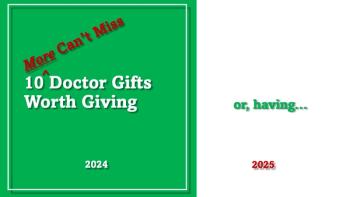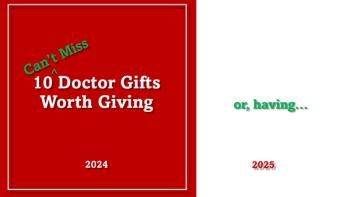
Physicians and Hospitals Paid $400 Million in Meaningful Use Incentives
The government has paid $400 million in meaningful use incentives to physicians and hospitals since registration began.
A Centers for Medicare and Medicaid Services (CMS) official told the Health IT Policy Committee last month that the government has paid $400 million in meaningful use incentives to physicians and hospitals since registration began for hospitals last year and January 1 of this year for physicians. Approximately 77,000 providers have registered for the program to date, and data collected by CMS showed that providers used required electronic health records (EHR) functions with a higher percentage of patients than was called for in the requirements.
In preliminary data, 2,383 physicians and other eligible professionals verified that they met meaningful use requirements under the Medicare program, with 137 attesting unsuccessfully. While the analysis did not explain why providers failed attestation, CMS indicated that they would drill down to find the reason behind the numbers. It was noted that 100 hospitals had attested successfully.
CMS has paid Medicaid incentives to 3,500 physicians and hospitals for adoption, implementation, and upgrades of certified EHR technology. Under the Medicare program, 1,000 physicians and hospitals have been paid incentives.
A promising statistic in the data showed that the number of physicians who received meaningful use incentives payments under Medicare increased significantly in July over June, from 329 physicians to 566.
E-Prescribing Incentives and Meaningful Use
Physicians must prove that they meet the requirements for meaningful use (MU) of EHR technology, which will evolve over three stages from 2011 through 2015. E-prescribing is a key component of MU. Stage one of MU requires that at least 40% of eligible prescriptions are prepared and sent to pharmacies electronically. If a physician wishes to participate in the program in 2011, they must demonstrate MU of their certified EHR technology for 90 consecutive days in 2011, beginning no later than October 1, 2011. The following aspects of stage one MU are supported by e-prescribing:
• 40% of prescriptions must be transmitted electronically,
• drug-drug and drug-allergy interaction checking must be performed,
• active medication lists must be maintained,
• allergy list must be maintained,
• medication reconciliation must be performed,
• information must be exchanged electronically, and
• formulary checking, a menu option in stage one, is expected to be required in stage two.
In their
• Assess your practice readiness to adopt e-prescribing technology.
• Choose an e-prescribing application that works for the particular dynamics of your practice (specialty, size, workflow).
• Understand the availability and requirements for public and private incentive programs that can assist with your adoption of e-prescribing technology.
• Deploy the technology in a way that best acclimates physicians and staff to adjustments in workflow.
• Monitor use of the technology to ensure that incentive program requirements are met and that it allows your practice to best leverage the benefits of this technology.
E-prescribing is a great way to begin the transition to an EHR, particularly if a physician intends to participate in the EHR incentive program. E-prescribing is an integral part of the MU requirements. When a certified e-prescribing application is bundled with a certified national patient registry and a comprehensive set of reporting tools for tracking and reporting on preventive care and chronic disease measures, it can help you meet core and menu objectives to qualify for stage one MU.
MIPPA Incentives
To promote the adoption of
Remember, G-code, G8553, needs be indicated on the corresponding Medicare claim, right beneath the office visit code. In more good news, by submitting the 25 e-prescriptions by year’s end, eligible physicians will also avoid a 1.5% penalty in 2013. Eligible professionals can also avoid the 2013 penalty by transmitting 10 e-prescriptions in the first six months of 2012, according to the proposed 2012 physician fee schedule. Completing 25 e-prescriptions by the end of 2012 will earn eligible professionals another 1% bonus.
It is important to note that the legislation does not allow providers to collect both the e-prescribing and EHR meaningful use incentives in the same year, so you must make a choice of either collecting the MIPPA incentive in 2011 or attesting to MU in 2011. Physicians can maximize the combined revenue by earning the e-prescribing bonus in 2011 and waiting to begin participation in MU until 2012, which still allows a physician to qualify for the full five years of EHR incentives ($44,000 as a Medicare provider). Either way, you must continue to comply with MIPPA requirements to avoid the future penalties.
AMAGINE Physician Portal
There are many e-prescribing systems to choose from and evaluating them may seem difficult. To find the right answers, start with the right questions. An AMAGINE representative can answer your questions about products and penalties, arrange product demonstrations, provide pricing, and help you integrate an e-prescribing product into your daily office workflow. Available via the internet on a subscription basis, each tool can be accessed through the AMAGINE physician portal. And physicians who use a certified patient registry along with a certified e-prescribing system can qualify for MU and federal incentives.
To help develop a health IT strategy for your practice, take advantage of our
This information is intended as a brief overview of the CMS ePrescribing program; be advised that guidelines differ for individual versus group practices. For complete guidelines, please visit the CMS website.
Newsletter
Stay informed and empowered with Medical Economics enewsletter, delivering expert insights, financial strategies, practice management tips and technology trends — tailored for today’s physicians.



















